FIVE RED FLAGS 🚩 to look out for when Managing your Project Budget
Must read for aspiring Project Managers! 🚀
Today’s Agenda
📈 Quick Top Tip - Gold Plating
🚀 Quote of the Week
❔ Community Question Answered
💲 Project Budget - 5 Red Flags
💥***BONUS***
Quick Tip 🌱
Hey Guys,
I’ve decided to include this new section into the newsletter providing a very quick top tip to help you!
Essentially, this is what I LEARNT THE HARD WAY 😱, so you certainly need to avoid this!
Gold Plating 👑
This is a common pitfall for new project managers looking to over-deliver on their project(s) and going the extra mile for their clients or stakeholders.
My Experience - I included a control system that was completely unnecessary because my conversation with a stakeholder (who eventually left before the project finished) thought it would be a great addition to have.
Turned out not so great….
Firstly, what on earth is GOLD PLATING?!
The short answer: Incorporating additional scope (such as features) to the agreed baseline scope. 👍
This is what it looks like:
Why is this BAD ❌?
Scope Creep: Gold plating causes scope creep by adding unnecessary features, leading to delays and budget overruns.
Resource Drain: It diverts resources from essential tasks, slowing down progress and hindering project efficiency.
Client Dissatisfaction: Clients may not value the extras, leading to dissatisfaction and strained relationships.
This is what you going to do to prevent this happening ✔️
Clear Requirements: Define clear project requirements upfront to avoid the temptation of adding unnecessary features.
Effective Communication: Communicate project goals and scope clearly with team members to prevent scope creep.
Change Control Process: Implement a change control process to evaluate and approve any proposed changes, ensuring they align with project objectives.
Quote of the Week 📜
“You can have brilliant ideas, but if you can’t get them across, your ideas won’t get you anywhere.”
Lee Iacocca
This is a classic 💬
Not just in Project Management, but for all leaders and managers - you need to be able to communicate EFFECTIVELY.
Your Questions
We’ve all been here and we all know the chaos that is sometimes associated with managing multiple projects at the same time.
My recommendation is to understand the priority of each project as well as their activities and work on the most critical first.
This is obviously easier said than done and I completely get you, so how could you approach this…
Try arrange your projects/activities according to a score, similar to a risk matrix.
Seek clarity from stakeholders
Understand the bigger picture and how each project fits into it
Escalate!
Develop a clear plan of how and when things will be dealt with, but also when you need specific stakeholders to do certain things
Communicate clearly to your line management about your availability and (perceived) priorities
Project Budget - 🚩FIVE Red Flags You Need to Know!
Cost Management is easy, right!?
Managing a Project budgets should be easy on paper, right? Maybe…
Well, to be honest, it depends..and in my opinion is that THINGS CHANGE, ALL THE TIME! 😭
My first project I overran on my budget almost ALL THE TIME! I didn’t even know why this was happening and I felt that I was trying to manage every aspects of the project will little to no success.
Looking back now, I realised that starting the project RIGHT, with a SOLID foundation is the best thing to do. 🏠
This provided me the ability to:
Monitor 👀
Predict 🔮
Communicate 🦜
Lead and manage confidently 🧭
Effectively get MORE MONEY 💰
What Red Flags should you be looking out for:
Cost Overruns: When actual expenses consistently exceed the budgeted amounts for various project activities or phases.
Unexplained Variances: Significant discrepancies between budgeted and actual costs without clear explanations or justifications.
Unanticipated Risks: Failure to identify or adequately plan for potential risks and uncertainties can lead to unexpected expenses that impact the project budget.
Inaccurate Estimations: Underestimating the cost of project activities or overestimating resource availability can result in budget overruns and financial strain on the project.
Unanticipated Expenses: Unexpected costs arising from unforeseen events, changes in market conditions, or external factors are not accounted for in the budget.
Here are some Metrics to track
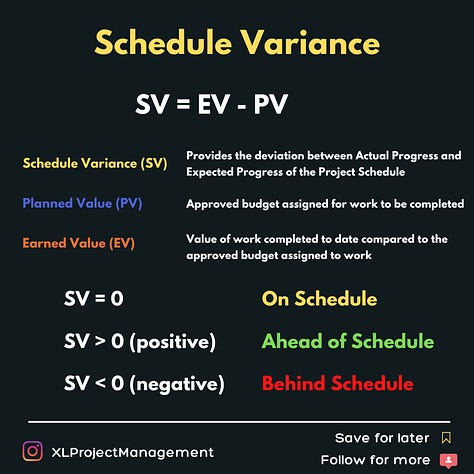
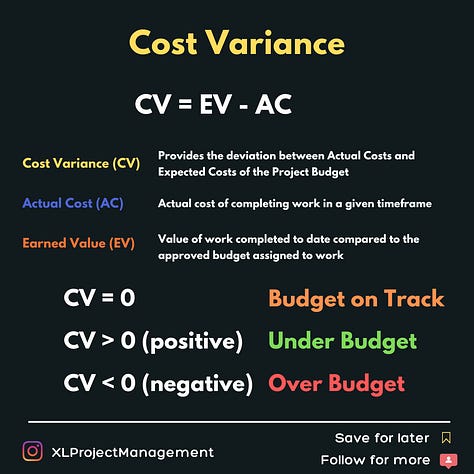
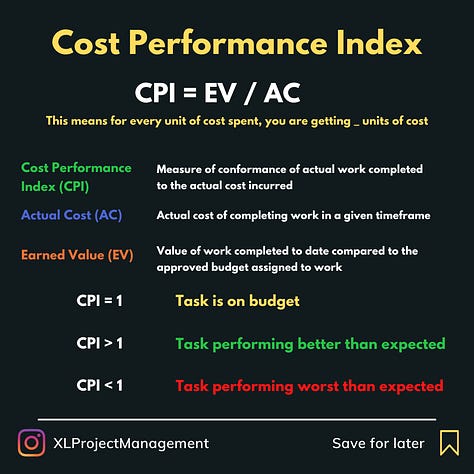
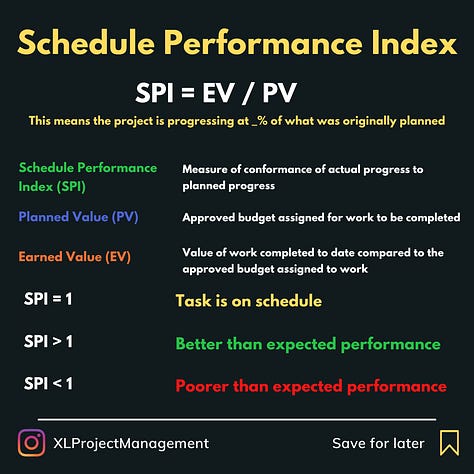
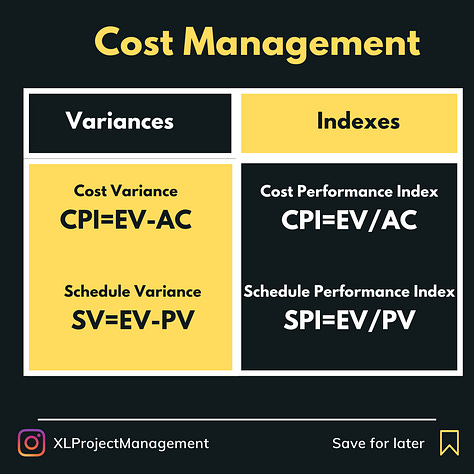
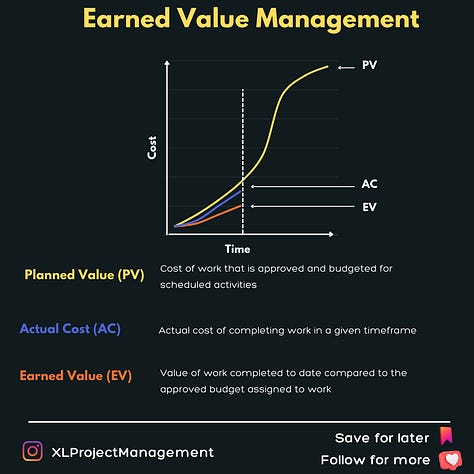
BONUS 🥅
Step 1: Define the Budget 💰
Start by meeting with key stakeholders to understand their expectations and financial constraints.
Create a comprehensive budget document that outlines all anticipated expenses for the project.
Consider factors such as labor costs, material costs, overhead, contingencies, and any other relevant expenses.
Ensure that your budget is realistic and aligns with the scope and objectives of the project.
Step 2: Identify Costs 📑
Gather information from various sources to identify all potential costs associated with the project.
Consult with subject matter experts, review historical data from similar projects, and solicit input from team members.
Create a detailed list of expenses, categorizing them into direct costs (e.g., labor, materials) and indirect costs (e.g., overhead, administrative expenses).
Step 3: Break Down Costs 📝
Break down your total project budget into smaller, manageable components or work packages.
Assign a cost estimate to each work package based on the resources and activities required to complete it.
Use a work breakdown structure (WBS) to organize and visualize the hierarchy of work packages within your project.
Step 4: Set Baselines 🎯
Establish baseline metrics for your project budget, including the budgeted cost of work scheduled (BCWS) for each work package.
Develop a project schedule that outlines when each work package is planned to be executed and how much it will cost.
Use this information to create a time-phased budget that aligns with the project timeline and milestones.
Step 5: Monitor Spending 💸
Implement a system for tracking and monitoring project spending in real-time.
Use accounting software or project management tools to record expenses, track invoices, and monitor cash flow.
Regularly review your budget tracking sheet to compare actual expenditures against the budgeted amounts.
Step 6: Calculate Variances 📉
Use earned value management (EVM) techniques to calculate key cost management metrics such as actual cost (AC), cost variance (CV), and schedule variance (SV).
Compare the actual cost of work performed (ACWP) with the budgeted cost of work performed (BCWP) to assess project performance.
Analyze variances to identify trends, potential risks, and opportunities for improvement.
Step 7: Adjust as Needed 🔄
Be proactive in managing project budget variances by identifying and addressing issues as they arise.
Consider reallocating resources, revising estimates, or implementing cost-saving measures to keep the project on track.
Document any changes to the budget and communicate them to stakeholders in a timely manner.
Step 8: Communicate 🗣️
Maintain open and transparent communication with all project stakeholders regarding budget status, variances, and any significant changes.
Provide regular updates on project financials during team meetings, status reports, and other communication channels.
Seek input and feedback from stakeholders to ensure alignment and support for budget management decisions.
Step 9: Learn and Improve 📈
Conduct a post-project review to evaluate the effectiveness of your budget management processes and identify lessons learned.
Document successes, challenges, and areas for improvement to inform future project budget management efforts.
Continuously seek opportunities to refine and optimize your approach to budget management based on feedback and experience.
By following these detailed steps, you'll be able to develop and create each section of your project budget management plan with confidence and precision. 🌟
More specific questions, drop me a message below:




